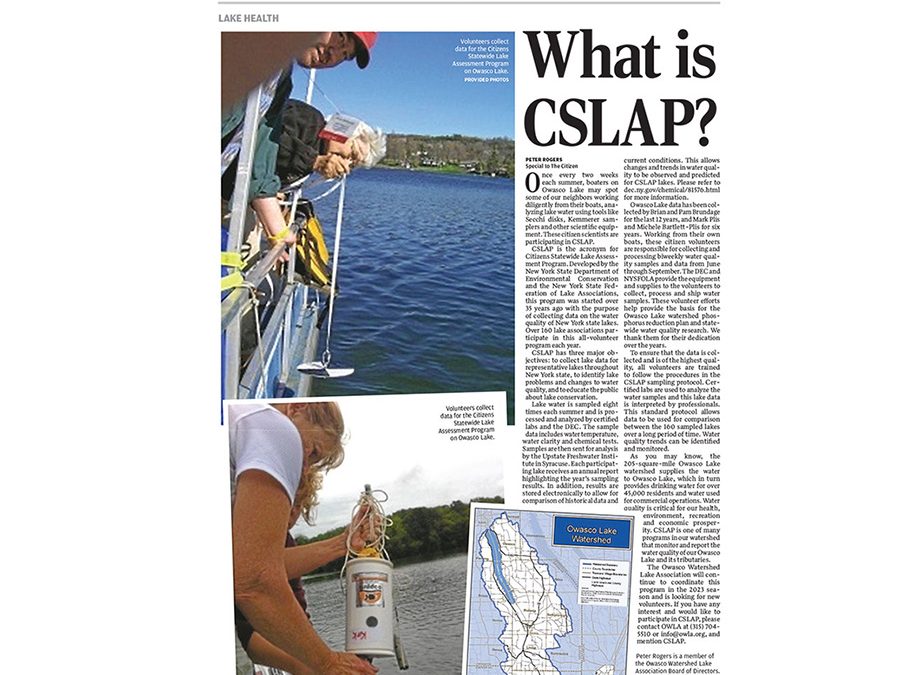Once every two weeks each summer, boaters on Owasco Lake may spot some of our neighbors working diligently from their boats, analyzing lake water using tools like Secchi disks, Kemmerer samplers and other scientific equipment. These citizen scientists are participating in CSLAP.
CSLAP is the acronym for Citizens Statewide Lake Assessment Program. Developed by the New York State Department of Environmental Conservation and the New York State Federation of Lake Associations, this program was started over 35 years ago with the purpose of collecting data on the water quality of New York state lakes. Over 160 lake associations participate in this all-volunteer program each year.
CSLAP has three major objectives: to collect lake data for representative lakes throughout New York state, to identify lake problems and changes to water quality, and to educate the public about lake conservation.
Lake water is sampled eight times each summer and is processed and analyzed by certified labs and the DEC. The sample data includes water temperature, water clarity and chemical tests. Samples are then sent for analysis by the Upstate Freshwater Institute in Syracuse. Each participating lake receives an annual report highlighting the year’s sampling results. In addition, results are stored electronically to allow for comparison of historical data and current conditions. This allows changes and trends in water quality to be observed and predicted for CSLAP lakes. Please refer to dec.ny.gov/chemical/81576.html for more information.
Owasco Lake data has been collected by Brian and Pam Brundage for the last 12 years, and Mark Plis and Michele Bartlett-Plis for six years. Working from their own boats, these citizen volunteers are responsible for collecting and processing biweekly water quality samples and data from June through September. The DEC and NYSFOLA provide the equipment and supplies to the volunteers to collect, process and ship water samples. These volunteer efforts help provide the basis for the Owasco Lake watershed phosphorus reduction plan and statewide water quality research. We thank them for their dedication over the years.
To ensure that the data is collected and is of the highest quality, all volunteers are trained to follow the procedures in the CSLAP sampling protocol. Certified labs are used to analyze the water samples and this lake data is interpreted by professionals. This standard protocol allows data to be used for comparison between the 160 sampled lakes over a long period of time. Water quality trends can be identified and monitored.
As you may know, the 205-square-mile Owasco Lake watershed supplies the water to Owasco Lake, which in turn provides drinking water for over 45,000 residents and water used for commercial operations. Water quality is critical for our health, environment, recreation and economic prosperity. CSLAP is one of many programs in our watershed that monitor and report the water quality of our Owasco Lake and its tributaries.
The Owasco Watershed Lake Association will continue to coordinate this program in the 2023 season and is looking for new volunteers. If you have any interest and would like to participate in CSLAP, please contact OWLA at (315) 704-5510 or info@owla.org, and mention CSLAP.

Recent Comments